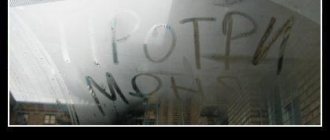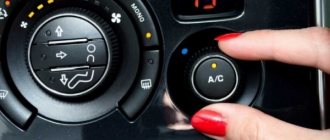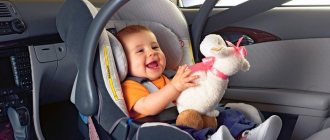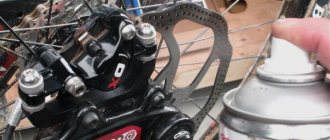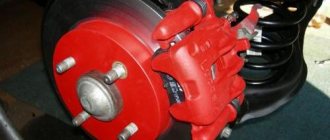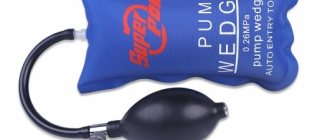You may not know this, but every experienced car owner of any type of transport must know how to properly climb and descend a slope. What is it for? You shouldn't say that. When you buy an SUV for travel, and not to look at it, then this skill will be useful to you in any case. In this article you will find useful tips on how to easily do this.
Never forget one rule - you must drive up or down a mountain only with the gear in gear. This is done so that the driver has time to change the engine speed (decrease, increase), and when exiting he is able to brake the engine.
A little theory
The hill descent assist system is built on the same principles as the stability control system. Typically and structurally, it is combined with the ESP (ABS) unit.
Its main difference from the ESP system is that when calculating the wheel locking forces, additional physical parameters are taken into account:
1. Gravity
.
When driving on a flat road (or with a slight slope), the dynamics are affected by inertial characteristics, engine dynamics, braking forces of the wheels, centrifugal acceleration, and the coefficient of friction of the wheel-road model.
When moving down a strong slope, gravity comes into play. It is proportional to the weight of the vehicle and the percentage angle of inclination. On steep slopes and a large vehicle mass, this force is significant.
Mathematically, it cannot be ignored when calculating the wheel locking forces. Thus, by activating this option, the driver starts another signal processing program of the ESP system.
2. Moment of vehicle rollover
.
SUVs have high ground clearance and overall vehicle height. The center of mass of the car is located 30 - 50 centimeters higher than that of a conventional passenger car.
If the vehicle is positioned across a steep slope, it may overturn. If at the same time the car still has centrifugal acceleration, the probability of a “flip-flop” increases many times over. All these points should also be taken into account by the option under consideration.
3. When driving on steep slippery slopes, the wheel-road friction coefficient
.
Theoretically, when falling along a vertical slope, it tends to zero. Thus, the dynamic calculation must take this factor into account.
Moving from theory to practice, it should be noted that the descent assistance system is more a necessary than an additional equipment of a car operated in difficult road conditions.
Cars with manual transmission
First of all, I would like to start with vehicles equipped with a manual transmission. First of all, we make the ascent. And so that you don’t go back down the slope again, before driving up the hill you need to:
- fully depress the clutch;
- at the same moment, engage the appropriate gear;
- then press the accelerator;
- release the clutch pedal, but most importantly, not quickly.
When attempting a longer climb, you first need to roughly determine its length and engage a low gear (usually second or third), with which you can easily overcome it completely. If we talk about first gear, it is most often preferred by beginners, but it is also popular when you need to make turns on a climb. To put it simply, first gear is very effective if you need to slow down or stop on a slope.
Experienced drivers, approaching a hill, immediately switch to a low gear, and thereby continue their acceleration. If you notice that the vehicle is not pulling well, and you were using the wrong gear, you should not press the gas all the way, because this will not change the situation. Just change to another gear, which is lower and try to repeat the action.
Take, for example, a tug, then everything is different, it must be done exclusively on the first one. Due to the fact that the speed should be low, and the motor itself must operate at high power.
Let's talk about the descent now. You should not be surprised, because descending is much more difficult than ascending, and accidents often occur for this very reason. When descending a slope, it is not advisable to use only brakes. An experienced motorist knows that you only need to brake on a descent with the engine, and again use the lowest gear, while releasing the clutch. You cannot use neutral gear when exiting, but most drivers do this in order to save gasoline or diesel fuel. However, such an action is very dangerous!
So, if you need to make an ascent and then a descent, it is recommended to perform such maneuvers in the same gear. In any case, driving down a slope does not need to be done in high gear. But thanks to the brakes when exiting, you can monitor the acceleration of vehicles and prevent the development of high speed.
Kinds
Currently, the following designations of such systems can be found on various car brands:
- DAC on Toyota cars (Downhill assist control);
- DDS on Nissan vehicles (Downhill Drive Support);
- DBS (Downhill Brake Control) on Hyundai;
- HDC – on BMW and VW (Hill Descent Control).
The appearance of the button that activates the system is approximately the same:
What is strictly forbidden to do
Regarding what is strictly forbidden to do on the slope when skiing, experienced instructors talk about such rules.
- 1. It is prohibited to go out under the influence of alcohol/drugs.
- 2. Trainers and instructors do not allow people prone to aggression and uncontrollable anger.
- 3. It is forbidden to litter - it can cause injury, just like walking animals.
- 4. It is prohibited to overcome fences and approach a short distance to the wheels of a moving lift and other technical structures.
- 5. It is prohibited to open electrical panels and turn off/on the lift yourself.
In addition, instructors say that when going for a walk, you should notify your friends, acquaintances or coach about where you are going. If you are going skiing in the mountains, you should not go alone. Fences and supports also pose a significant danger - that’s why it’s so important not to get close to them, and if there is a sudden change in weather, you should immediately stop any skiing.
How is activation done?
The descent control system is activated when several prerequisites are met:
- vehicle speed is less than 20 kilometers per hour;
- the engine is running;
- traffic incline more than 20 percent;
- There is no pressure on the accelerator and brake pedal.
If the driver accidentally presses the accelerator or brake pedal, hill descent control is immediately deactivated.
Some cars have their own starting algorithm. For example, the RAV4 offers the following algorithm:
- before the expected descent, H4 is turned on, all-wheel drive is activated;
- before descending, the selector is stopped and switched to N;
- L4 turns on, expected until 4LO blinks;
- the DAC system button is pressed;
- start moving;
- When the descent is complete, press the brake or accelerator pedal.
A rather complicated algorithm that a professional must bring to automaticity.
In modern cars, the starting algorithm is simpler, but the basic requirements associated with the brake and gas pedals are the same.
What rules should you follow?
When skiing, experienced trainers give a number of tips and recommendations, and voice the following skiing rules.
1. First of all, this is respect for others - this is not only the basic rules of politeness, but also a prohibition on exposing others to danger when skating.
2. Control the speed of skiing, the direction of your movement - if you are new to the ski slope, you should get on your skis under the supervision of a trainer.
3. Choosing the right direction - when you approach someone from behind, you should choose the direction so as not to endanger other skiers. If you are overtaking, it is important to leave enough room for other skiers to maneuver.
4. When starting to move, or resuming it after stopping, it is important to look around and look up/down the slope for potential danger, other skiers who may pose a potential danger.
5. Regarding stopping on slopes , you should not stop in a narrow place or in an area with limited visibility.
6. When going up and down, it doesn’t matter whether you are wearing skis or not, move along the edge of the route.
7. It is important to follow the markings and not ignore identification and warning signs. They are as important as signs on the road for a motorist.
8. Always help each other within the limits of your skills and qualifications, and time is an important factor in this case.
Features of circuit design and maintenance
In circuit design, the hill descent control unit is usually located in the ESP (or ABS) unit. Thus, if the ABS or ESP system is not working, the hill descent control system will not turn on.
When servicing and repairing this system, it is necessary to start with the ABS system. The most “popular” malfunctions of this system:
- failure of wheel rotation sensors;
- clogging of the gaps between the sensor and the teeth (ring) of the motion indicator;
- break in the wiring from the sensor to the ESP (ABS) unit.
The last point is most relevant when driving over rough terrain with low-growing vegetation.
ESP control units equipped with additional hill descent assist have additional G-sensors and vehicle inclination angle sensors. They usually do not fail; sometimes they are built into electronic units. Therefore, when attaching the ESP and ABS units, alignment (horizontal positioning) must always be observed.
Security program features
Electronic vehicle control simplifies control in difficult and extreme situations, reducing the risk of skidding.
Electronic Stability detects the vehicle's direction of travel and then applies brakes on individual wheels to keep the vehicle moving in the desired direction. The program uses:
- anti-lock braking system (ABS);
- electronic brake force distribution (EBD);
- electronic differential lock (EDL) systems;
- traction control systems (ASR).
Newer versions also feature a dry brake feature, which means the system wipes water off the brake discs at certain regular intervals, applying the brake pads to provide greater stability and shorter stopping distances, even in the rain.
The developer of the system was Toyota Corporation. This manufacturer takes driving safety seriously and therefore introduces Toyota's famous Star Safety System offered on every one of its vehicles.
Principle of operation
The principle of operation of the descent control system is to timely brake a specific wheel when the set descent speed is exceeded. This achieves uniform and equidirectional (without drifts and turns) movement.
Experienced car enthusiasts know that in mountainous driving conditions “engine braking” is most effective. Most vehicles operating in such areas are equipped with this option.
However, in cars with an automatic gearbox, “connecting” the engine to braking is problematic. In some modern cars, a more complex algorithm for the operation of the hill descent assist system is connected to the transmission control unit and the engine control unit.
Operating principle[ | ]
The principle of operation of the system is based on maintaining a constant speed during descent by braking the wheels, as well as controlling engine settings. Based on sensor signals, the electronic control unit analyzes the current driving situation and, if necessary, turns on the return pump. The intake and ABS high-pressure valves open, while the exhaust and switch valves close. Next, the necessary pressure is pumped into the brake system, which ensures a reduction in speed to a certain value. It depends on the initial speed of the car and the gear engaged (usually within 5-15 km/h). Moreover, braking occurs very carefully to avoid drift and possible overturning of the car. If necessary, the system operation cycle is repeated again. In this case, the system’s control algorithm is triggered under certain conditions: the car is started, the gas and brake pedals are released, the speed is less than 20 km/h, and the grade being overcome is more than 20%.
Cars with electronically controlled automatic transmissions may have engine braking. The automatic transmission ECU independently recognizes the engine braking mode (usually on steep, long descents) and forcibly engages a lower gear (third with a four-speed automatic transmission) when a given speed is reached, without overloading the transmission and engine. To remove the braking mode, just put your foot on the gas pedal, and the automatic transmission will immediately switch to a higher gear (the engine speed will drop).



